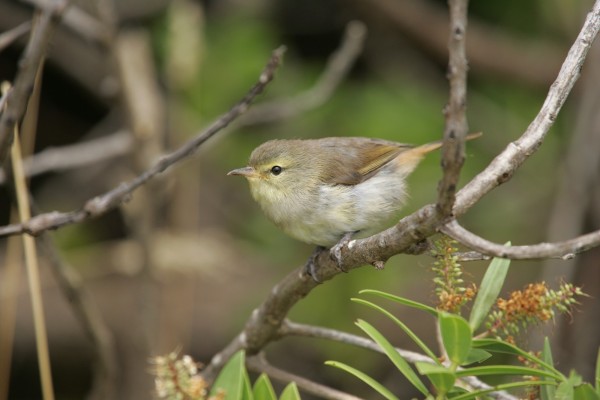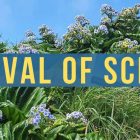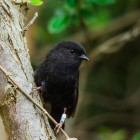Blog and news
Protecting the Chathams with Biosecurity
With so many rare species and ecosystems, and a community that depends on nature for its livelihood, biosecurity is key for the Chatham Islands. In November 2024, a biosecurity workshop started exploring ways to strengthen existing processes that protect our islands.
The remote Chatham Islands are lucky to have avoided some of the introduced pests that plague the mainland, from voracious predators like stoats, to the varroa mite that can destroy beehives, to invasive grasses that cause havoc for pastures.
There might be 800km of ocean between the Chatham Islands and the mainland, but there are still plenty of ways for pests to arrive. Once they do, they can cause lot of damage. They can also be very hard to get rid of – something islanders know all too well. Pests like possums, rats, and even gorse have all had a huge impact on the natural environment, and on important activities like farming and gardening.
The Chathams have a Biosecurity Strategy, but it’s important to make sure the islands’ approach is current and focused on the areas that matter most to our community. Biosecurity will also be essential for Predator Free Chathams, as we work towards eradication. This in mind, the Chatham Islands Landscape Restoration Trust (CILRT) asked a biosecurity expert to come pay the islands a visit.
Andrew Robinson identifies a pest plant.
Getting a biosecurity expert involved
In the last week of November 2024, Andrew Robinson from the Centre of Excellence for Biosecurity Risk Analysis (CEBRA) based out of the University of Melbourne came to Rēkohu/Wharekauri to undertake a biosecurity fact-finding exercise and facilitate a biosecurity hui.
Andrew is the CEO of CEBRA, with a background in risk analysis and biosecurity. He’s worked with a number of organisations and groups to help them develop ways to protect the things they care about from biological threats. Recently, he ran a biosecurity exercise with Rakiura/Stewart Island, who are looking to enhance their island’s biosecurity as they begin their own Predator Free project.
Getting Chathams context
In the week he was on the island, Andrew visited the two pathways that link the island to mainland NZ: Waitangi Port and the Inia William Tuuta Memorial Airport. Seeing the facilities first hand, and hearing from those who work in those spaces and implement biosecurity protocols, gave invaluable context on some of the challenges.
He also visited DOC’s quarantine facility and was able to observe their quarantine process, spent time talking with ECan who are contracted to implement the islands’ biosecurity strategy, visited Port Hutt and Kaingaroa, and had a cup of tea with CILRT’s newest Trustee at Admiral Gardens.
Biosecurity in action in the DOC quarantine facilities.
Biosecurity Hui
The Biosecurity Hui focused on sharing baseline information with the community, and provided a framework to begin identifying the most valued assets, the biggest biosecurity threats to those values, and the most likely pathways those threats could arrive by. The hui had a great turnout with 33 on-island and external stakeholders attending.
Andrew noted the Chathams are already quite advanced when it comes to biosecurity, have some good existing processes in place, and a solid social understanding of the value our environment adds to our daily lives and the importance of trying to protect it. After a discussion about the challenges of identifying and managing biosecurity risks, Andrew ran an initial exercise to identify and prioritise what the islands most want to protect (the “values”).
Identifying and ranking values.
Our islands’ values
Although by no means the final cut, the top four of the twelve values were: oceans, wellbeing, bees, and biodiversity.
The biggest biological threats to these values were a range of invasive animal, plant and fungal pests, both land- and water-based.
The main pest pathways
The next step was to identify the pathways these threats are most likely to arrive by. This included:
- Cargo through the port and airport, including fresh produce
- The boat itself, along with other ocean and air craft
- Shipping containers, often used to transport cargo
- Travelers to the island, who could accidentally bring invasive species in luggage and gear
- Natural pathways, like wind, tide, and migration.
There was particular interest in two aspects of biosecurity: keeping biological threats out of the Chathams, and keeping existing threats from moving around between different islands (for example, making sure rats from Chatham Island don’t spread to Pitt Island).
Predator Free 2050 Ltd and Chatham Islands Council helped with organising the hui. Attendees to the meeting included representatives from Ngāti Mutunga o Wharekauri Iwi Trust, Hokotehi Moriori Trust, the islands’ fishing, agriculture, honey and tourism industries, SPS Biota (who provide biosecurity services for the island), Chatham Islands Council and ECan, CIRLT, Taiko Trust, DOC, Ministry for Primary Industries, the Chatham Islands Airport Company, the Chatham Islands Ports Company, Air Chathams, community members, and PF2050 Ltd.
Hamish Chisholm CRILT, Andrew Robinson CEBRA, and Dan Tompkins PF2050.
The next steps
The hui was a first step in refreshing the islands’ current biosecurity approach to make it more robust. It’s an important part of ensuring the islands remain free of pests that can damage the economy, ecosystems, and livelihoods.
Further biosecurity activities will be carried out in 2025 to work towards this. Information will be shared with our community and other stakeholders as these events are scheduled. Once the report from the Biosecurity Hui is finalised, we’ll share it on our website.
One of CILRT’s focuses for the future is going to be on developing a biosecurity approach for Predator Free Chathams. As we start to eliminate predators from our project areas, we need to prevent and manage reinvasion in these areas.

Chatham Island warbler - one of the species biosecurity can help protect. Image: Dave Boyle
What you can do
For more information about biosecurity on the Chatham Islands – including ways you can avoid accidentally introducing something yourself – visit the Chatham Islands Council website.
Any community members or other stakeholders who’d like to be involved should contact the Chatham Islands Council.


